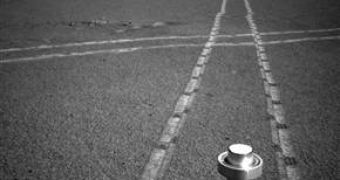NASA's Opportunity Rover will soon descend into the 230-foot-deep Victoria Crater on Mars to turn the page of the Red Planet calls "a geologic history book," after spending the last couple of months making a clockwise trip around the crater's rim, heading for a breach called Duck Bay.
The Opportunity mission, actually called MER-B (Mars Exploration Rover - B) is the second of the two rovers of NASA's Mars Exploration Rover Mission and it's been on Mars since January 25, 2004, functioning for a surprisingly long time, over ten times longer than NASA planners expected, allowing it to perform extensive geological analysis of Martian rocks and planetary surface features.
"Our adventure continues," said astronomer Steven Squyres, principal investigator for NASA's Mars rover missions. "We hope to travel to Duck Bay. If a careful safety review indicates that it's safe to go in, we're going to go in. We're going to do a lot of good science, and then we're going to come out again and keep going forward."
The rover will survey the quarter-mile-wide Victoria Crater from the inside, after it will roll down for a closer look at its bedrock cliffs. These layers in the rock exposed by ancient impacts revealed much about the planet's history, and a close analysis of the layers in a similar crater provided evidence that the planet once had enough liquid water to sustain life.
Victoria Crater is bigger and it's the best geological laboratory Mars could provide, and astronomers think that layered rocks lining the walls of the crater are likely to yield deep insights about Mars' geologic ages, just as layered rocks on Earth reveal the epochs of our own planet's development.
The Mars probes are also helped by NASA's Mars Reconnaissance Orbiter, which provided a space view of Victoria Crater and has been used by astronomers to map Opportunity's progress.

 14 DAY TRIAL //
14 DAY TRIAL //